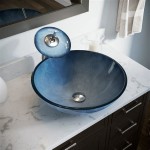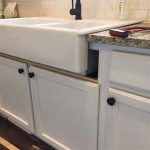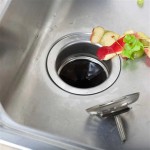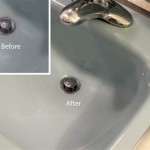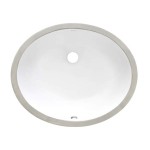Water Repellent Solutions for Stainless Steel Sinks
Stainless steel sinks are a popular choice for both residential and commercial kitchens due to their durability, resistance to corrosion, and sleek appearance. However, one common issue encountered by many stainless steel sink owners is the formation of water spots and streaks. These unsightly marks are caused by mineral deposits left behind when water evaporates, diminishing the sink's aesthetic appeal. Applying a water repellent solution can effectively mitigate this problem, preserving the sink's shine and simplifying maintenance.
A water repellent treatment creates a hydrophobic surface on the stainless steel, causing water to bead up and roll off instead of clinging and leaving residue upon drying. This not only reduces the frequency of cleaning but also protects the underlying metal from potential staining or corrosion caused by prolonged exposure to hard water.
Understanding Water Repellency and Hydrophobicity
The principle behind water repellent coatings lies in the science of hydrophobicity. Hydrophobicity refers to the ability of a surface to repel water. This property is determined by the surface energy and the chemical composition of the material. A surface with low surface energy will exhibit hydrophobic characteristics, meaning water will form droplets and have a high contact angle with the surface, rather than spreading out and wetting it. In the context of stainless steel, achieving hydrophobicity involves modifying the surface to reduce its surface energy, typically through the application of a specialized coating.
Various materials can be used to create hydrophobic coatings. These include polymers, waxes, and silanes. Each type of material offers different advantages and disadvantages in terms of durability, ease of application, and effectiveness. The ideal choice depends on the specific requirements of the application and the desired level of protection.
Coatings can be applied through different methods. Some are spray-on formulations, while others are in a wipe-on format. The application process significantly influences the performance and longevity of the coating. Proper surface preparation is crucial to ensure optimal adhesion and effectiveness. This typically involves cleaning the sink thoroughly to remove any existing dirt, grease, or mineral deposits before applying the water repellent solution.
Types of Water Repellent Products for Stainless Steel Sinks
The market offers a variety of water repellent products designed specifically for stainless steel surfaces. These products can be broadly categorized based on their composition and application method. Understanding the different types available allows consumers to select the most suitable option for their needs.
1. Wax-Based Products:
These products typically contain natural or synthetic waxes that create a hydrophobic barrier on the stainless steel surface. They are generally easy to apply and provide good water repellency. However, wax-based coatings may require more frequent reapplication compared to other types.Application usually involves applying a small amount of wax to a clean cloth and buffing it onto the surface in a circular motion. Excess wax should be removed with a clean cloth. The resulting coating leaves a smooth, water-repellent finish.
2. Polymer-Based Products:
Polymer-based coatings offer enhanced durability and resistance to wear compared to wax-based products. These coatings often contain acrylic or silicone polymers that form a thin, protective layer on the stainless steel. The polymer film resists scratches, stains, and water spots effectively.Application typically involves spraying the polymer solution onto the surface and wiping it evenly with a microfiber cloth. Some polymer-based products may require a curing period to achieve maximum hardness and durability.
3. Silane-Based Products:
Silane compounds are known for their excellent adhesion to metal surfaces and their ability to create a durable, hydrophobic coating. Silane-based products react with the stainless steel surface to form a chemical bond, resulting in a long-lasting water repellent effect.Application requires ensuring proper ventilation and wearing appropriate protective gear, as some silane-based products may contain volatile organic compounds (VOCs). The product is usually applied by spraying or wiping, followed by a specified drying time. Silane-based coatings are highly resistant to chemicals and abrasion, making them a suitable option for high-use sinks.
4. Nano Coatings:
Nano coatings represent a more advanced technology, utilizing nanotechnology to create ultra-thin, highly hydrophobic layers on the stainless steel. These coatings consist of nanoparticles that create a dense, water-repellent barrier without significantly altering the appearance of the sink. Nano coatings often exhibit self-cleaning properties, meaning dirt and grime are easily washed away by water.Application generally involves a multi-step process, including surface preparation, application of the nano coating, and curing. The result is a long-lasting, highly effective water repellent surface that is resistant to scratches, stains, and corrosion. The cost of nano coatings is often higher than other types of water repellent products, but the enhanced performance and durability may justify the investment for some users.
Factors to Consider When Choosing a Water Repellent Product
Selecting the right water repellent product for a stainless steel sink depends on several factors, including the frequency of use, water quality, and desired level of maintenance. Evaluating these factors will help consumers make an informed decision and choose a product that provides optimal protection and longevity.
1. Durability:
Consider how frequently the sink is used and the potential for abrasion or chemical exposure. For high-use sinks in commercial settings, a more durable coating, such as a silane-based or nano coating, may be necessary. For residential sinks with moderate use, a polymer-based product may suffice.2. Ease of Application:
Evaluate the application method and the time required for application and curing. Some products are easier to apply than others, and the application process can significantly impact the final result. If ease of use is a priority, a spray-on or wipe-on product may be preferred.3. Water Quality:
Hard water contains high levels of minerals, such as calcium and magnesium, which can leave stubborn water spots on stainless steel. If the water supply is hard, choose a water repellent product that is specifically formulated to resist mineral buildup. Silane-based and nano coatings are often more effective at preventing water spots in hard water conditions.4. Environmental Impact:
Consider the environmental impact of the product, including its VOC content and biodegradability. Some water repellent products contain harmful chemicals that can contribute to air pollution. Look for products that are labeled as low-VOC or environmentally friendly.5. Cost:
Compare the cost of different water repellent products, taking into account their performance and longevity. While some products may have a higher initial cost, they may offer better value in the long run due to their durability and resistance to wear. Consider the cost of reapplication when comparing different products.6. Safety:
Always read and follow the manufacturer's instructions carefully, and wear appropriate protective gear, such as gloves and eye protection, when applying water repellent products. Ensure adequate ventilation to avoid inhaling harmful fumes. Store products in a safe place, away from children and pets.Preparation and Application Techniques
The effectiveness of any water repellent treatment hinges on proper surface preparation and application. Taking the time to prepare the stainless steel sink thoroughly will ensure optimal adhesion and performance of the chosen product.
1. Cleaning:
Begin by thoroughly cleaning the stainless steel sink to remove any existing dirt, grease, or mineral deposits. Use a mild detergent and warm water to wash the sink, and then rinse it thoroughly with clean water. Avoid using abrasive cleaners or scrub brushes, as these can scratch the surface of the stainless steel.2. Drying:
After cleaning, dry the sink completely with a clean, lint-free cloth. Ensure that there is no residual moisture on the surface before proceeding with the application of the water repellent product. Moisture can interfere with the adhesion of the coating and reduce its effectiveness.3. Surface Preparation (Optional):
For optimal results, consider using a stainless steel cleaner or polish to remove any lingering residue or oxidation from the surface. Follow the manufacturer's instructions carefully, and ensure that the sink is thoroughly cleaned and dried after using the cleaner or polish.4. Application:
Follow the manufacturer's instructions for applying the chosen water repellent product. Typically, the product is applied by spraying or wiping it onto the surface, ensuring even coverage. Avoid applying too much product, as this can lead to streaking or uneven drying. Use a clean microfiber cloth to spread the product evenly and remove any excess.5. Curing:
Allow the water repellent product to cure according to the manufacturer's instructions. Curing time can vary depending on the type of product and the ambient temperature. During the curing period, avoid using the sink or exposing it to water. Some products may require multiple coats for optimal performance.6. Maintenance:
To maintain the water repellent effect, periodically clean the sink with a mild detergent and warm water. Avoid using abrasive cleaners or scrub brushes. Reapply the water repellent product as needed, following the manufacturer's instructions. The frequency of reapplication will depend on the type of product and the frequency of sink use.Troubleshooting Common Issues
Even with proper application, some common issues may arise with water repellent coatings on stainless steel sinks. Understanding these issues and how to address them can help maintain the effectiveness and appearance of the coating.
1. Streaking:
Streaking can occur if the water repellent product is not applied evenly or if too much product is used. To correct streaking, clean the sink thoroughly and reapply the product, ensuring even coverage and removing any excess. Use a clean microfiber cloth to buff the surface after application.2. Uneven Coverage:
Uneven coverage can lead to inconsistent water repellency. To address this issue, reapply the water repellent product, paying particular attention to areas that appear to be lacking coverage. Ensure that the entire surface is coated evenly.3. Loss of Water Repellency:
Over time, the water repellent effect may diminish due to wear and tear or exposure to harsh chemicals. To restore the water repellency, clean the sink thoroughly and reapply the water repellent product according to the manufacturer's instructions.4. Cloudy Appearance:
Some water repellent products may leave a cloudy appearance on the stainless steel surface. This can be caused by residual product or improper curing. To remove the cloudy appearance, clean the sink thoroughly and buff the surface with a clean microfiber cloth. If the cloudiness persists, try using a stainless steel polish to restore the shine.5. Discoloration:
Certain chemicals or cleaning agents can cause discoloration of the water repellent coating. Avoid using harsh chemicals or abrasive cleaners on the sink. If discoloration occurs, try cleaning the sink with a mild detergent and warm water. If the discoloration persists, reapply the water repellent product.
Hope S Perfect Sink Cleaner And Polish Restorative Water Repellant Removes Stains Ideal For Brushed Stainless Steel Cast Iron Porcelain Corian

Hope S 8 5 Fl Oz Herbal Stainless Steel Cleaner 9sk6 At Com

Hope S 8 5 Fl Oz Herbal Stainless Steel Cleaner 9sk6 At Com

How Do I Keep Water Spots Off Stainless Steel Sink Hometalk

9 Best Stainless Steel Cleaners Of 2024 Tested By Experts
Expert Shares Tips For Cleaning Porcelain And Stainless Steel Sinks Business Insider

13 Best Sink Cleaners Family Handyman

Stylish Bright Undermount 30 In X 18 Graphite Black Stainless Steel Single Bowl Kitchen Sink S 711xn At Com

Lordear Drop In 33 X 22 Stainless Steel Single Bowl 16 Gauge Kitchen Sink Black Ld Ltb3322r1

Karran Usa Qt 711 33 Top Mount Large Small Bowl Quartz Kitchen Sink


